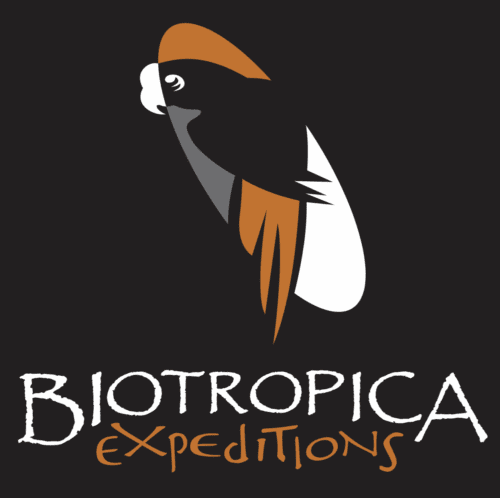From Andean Peaks to Amazon Rainforests
A Birdwatching Safari on Ecuador's East Slope9-days / 8-nights
$4,395 per person/ double occupancy
Antisana – Papallacta – Cosanga – Sumaco
Embark on an extraordinary wildlife and birding adventure as we journey from Ecuador’s high Andean páramos to its lush Amazonian rainforests.
We have planned this trip to highlight the best of northeast Ecuador. With easy to moderate excursions each day, we will enjoy breathtaking scenery while pursuing sightings of magnificent birds and wildlife.
This carefully curated expedition takes you through three distinct ecosystems, each teeming with unparalleled biodiversity and offering a wide range of birdwatching and wildlife encounters.
From stunted subalpine scrub to Andean montane forests and into lush subtropical and foothill cloud forests, the scenic Andes reveal a breathtaking array bird life, including stunning tanagers, brilliant hummingbirds, and an impressive list of other fabulous birds.
Led by experienced guides and naturalists, this journey supports local conservation efforts. Furthermore, your trip will have a positive impact on local communities while you uncover Ecuador’s captivating landscapes and magnificent avian diversity.
This program may be taken in combination with Ecuador: Jewels of the Amazon Lowlands – Napo Wildlife Center.
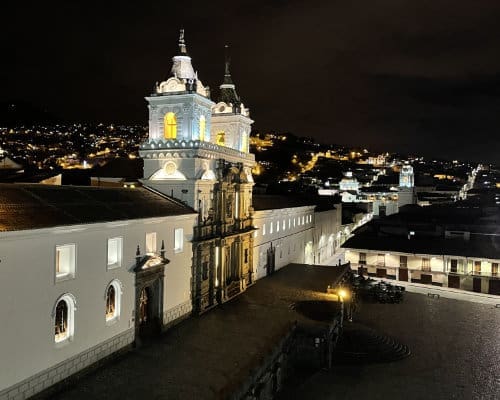
The Iglesia San Francisco in Historic Quito | ©Norby Lopez Granda
Day 1 – Welcome to Quito
Arrive in Quito, capital city of Ecuador.
You should plan to arrive in Quito on or before the official first day of our trip.
Most flights to Quito (UIO) from the United States arrive in the late evening. Participants wanting to avoid the risk of misconnection, possible flight delays, or preferring to allow extra days to acclimate prior to the tour should consider arriving prior to day 1.
If you would like to arrive a couple of days prior, please inquire for excursion options in Quito’s historical center, a UNESCO World Heritage Site or to other iconic destinations in the greater metropolitan area.
We will meet you upon arrival to the airport and assist in your transfer to your hotel.
Overnight hotel in Quito.

Giant Hummingbird | ©Norby Lopez Granda
Day 2 – Antisana National Park
Explore the Andean Paramo of Antisana National Park.
We will begin our birding safari at Antisana National Park, named for its iconic volcano. The summit of snowcapped Antisana is 18,891 ft above sea level. It’s the fourth highest peak in Ecuador.
Birdlife categorizes Antisana as an Important Bird Area and is part of the Andean Condor Bioreserve, it is just a worthy glimpse between 10,500 ft to 15,000 ft above sea level.
The reserve provides opportunities to understand the geological history of the Andes and the importance of this unique ecosystem. We will have the opportunity to observe many high altitude bird species including Ecuadorian Hillstar visiting the Chuquiragua bushes, Black-tailed Trainbearer, Stout-billed Cinclodes, Andean Tit-Spineatil, Many-striped Canastero, Tawny Antpitta, Tufted Tit-Tyrant, Red-crested Cotinga, Paramo Pipit, Plumbeous Sierra-Finch and Black- winged Ground-Dove. Further inside the park, we may observe many Carunculated Caracaras, Andean Gulls, Andean Lapwings, and many other species that are absent or difficult at other sites such as the rare Black-faced Ibis.
Furthermore, this national park has many steep cliff faces where we might view up to 30 Andean Condors in a single day; this is a large number considering an estimated wild population of 150 individuals in Ecuador.
Overnight at Papallacta Hotsprings.
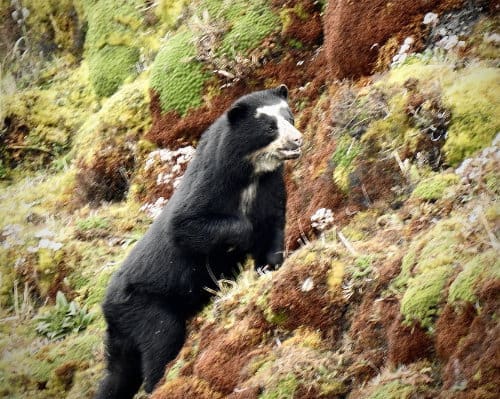
Andean Spectacled Bear | ©Norby Lopez Granda
Day 3 – Cayambe Coca National Park & Guango Lodge
Birdwatch the tundra-like Cayambe Coca National Park & lush cloud forests along the Papallacta River.
From Papallacta Hotsprings, we will take a scenic drive towards the Papallacta Pass along a dirt road into the Cayambe Coca National Park.
We will have an excellent opportunity to spot unique birds found in this high elevation paramo that is reminiscent of tundra. We’ll check stands of Polylepis woodland for Giant Conebill, White-chinned Thistletail, Pearled Treerunner, the scarce Red-rumped Bush-Tyrant, and several species of tanagers.
At the highest elevations, we’ll seek out the secretive Rufous-bellied Seedsnipe. Additionally, along this route we have occasionally observed Spectacled Bear!
After exploring the high paramo, we will visit Guango Lodge to get a taste of the enchanting Andean temperate forests. Colorful mixed flocks including Lacrimose and Hooded Mountain Tanagers, Blue-backed Conebill, and Black-capped Hemispingus can be seen around the lodge. Here you have possibilities for rare and very local birds like the Mountain Avocetbill, the stunning Gray-breasted Mountain-Toucan, Andean Guan, and Northern Mountain Cacique.
Along the Papallacta River we’ll try to find a unique resident of fast flowing mountain rivers, a powerful swimmer and diver: the Torrent Duck. This bird could definitely be a highlight for the day!
Overnight at Papallacta Hotsprings Refuge.
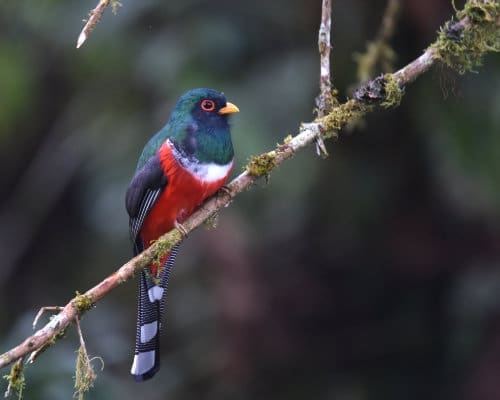
Masked Trogon | ©Angela Drake
Day 4 & 5 – Cabañas San Isidro in Cosanga
Embrace nature in the humid subtropical zone in the Andean foothills of Cosanga.
At 6,600 ft. in elevation, we find ourselves in the heart of the humid subtropical zone, in all its natural splendor, and we’ll have two full days to explore a wide range of habitats throughout the reserve at Cabañas San Isidro and the surrounding area.
Here’s how Frank Chapman described this Andean ecosystem:
“Every available foot of ground is claimed by parasitic or epiphytic vegetation. This marvelous Subtropical Zone occupies the humid mountain slopes from the upper limit of the Tropical Zone to an altitude of from 8,000 to 9,500 feet and it extends from Bolivia to Mexico. It is remarkable not alone for the richness of its life but for the high percentage of species found only within its boundaries. Protective coloration is at a discount in the Subtropical Zone. The density of vegetation protects and, among arboreal birds at least, color unchecked runs riot. Every day brought beautiful creatures we had never seen before.”
Here at San Isidro and its surroundings, we find ourselves in one of the finest sites in the world for birding and wildlife encounters in this rich zone and the possibilities seem endless. At the first hint of dawn, thrushes and Andean Solitaires sing; soon, as it becomes light, the vegetation suddenly comes alive with birds attracted to the lodge lights for insects.
Typically, Inca (Green) Jays, Russet-backed Oropendolas and Subtropical Caciques arrive first. Then tanagers, woodcreepers, flowerpiercers, flycatchers, and other small birds arrive, allowing us remarkably close observation as they forage close at hand. Meanwhile Black Agouti inspect the forest floor for nuts, seeds and other invertebrates.
As the morning progresses, clouds begin to blanket the mountain slopes, bathing the forest in mist. As the clouds appear, the mixed-species flocks around the lodge seem to become most active. Amidst the seemingly endless array of tanagers are such gems as Crimson-mantled Woodpecker, Green-and-black Fruiteater, Handsome & Cinnamon Flycatchers, Barred Becard, Black-billed Peppershrike, Black-crested & Russet-crowned Warblers, Blue-winged Mountain-Tanager and Bluish Flowerpiercer.
To experience a big mixed-species foraging flock in the subtropics is one of the supreme joys—or utmost frustrations—of Neotropical birding. At times these flocks are hard to locate, or the light can be poor and the birds move off rapidly. At other times, however, they linger and forage deliberately, providing a spectacular visual feast as one species after another comes into view.
Among the many additional special possibilities in this region are Black-and-chestnut Eagle, Wattled & Sickle-winged Guans, Red-billed Parrot, Golden-headed & Crested Quetzals, Masked Trogon, Andean Motmot, Powerful Woodpecker, Streak-headed Antbird, Rufous-crowned Tody-Flycatcher, and Andean Cock-of-the-rock.
The diversity of hummingbirds here is high. The different species can be spotted zipping around from the understory to the canopy. With such a profusion of flowers to choose from, they are not concentrated and can be frustrating to see at times. However, with the help of very active nectar feeders, we should be able to secure excellent, even point-blank looks at many of the possible species. This includes Tawny-bellied Hermit, Lesser Violetear, Speckled Hummingbird, Chestnut-breasted Coronet, Bronzy Inca, Collared Inca, and Long-tailed Sylph.
We will also take one afternoon to return to the nearby Vinillos entrance area, which always produces exciting surprises and more opportunities to encounter Barred Parakeet, Sickle-winged Guan, Crested Quetzal, White-throated (Southern Emerald-) Toucanet, Black-billed Mountain-Toucan, Rusty-winged Barbtail, Sulphur-bellied Tyrannulet, Saffron- crowned Tanager and perhaps Red-breasted Meadowlark (Blackbird).
For current birdlists, check out Ebird.
Two overnights at Cabañas San Isidro.
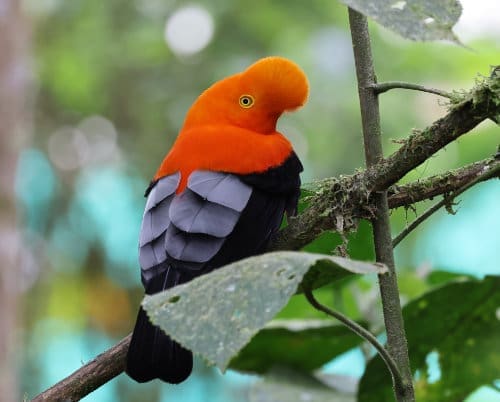
Andean Cock of the Rock | ©Norby Lopez Granda
Day 6 & 7 – Wildsumaco in Sumaco
Experience the rich rainforests of the lower eastern foothills, the filter for Andean waters heading to the great Amazon River.
Wildsumaco Lodge provides a comfortable place to stay in the eastern foothills. It lies off the main road and amidst great habitat at a site chosen and designed by birders and naturalists.
The foothill birds are a unique mix from both the Amazonian tropics and the cooler subtropical regions. Furthermore, this zone has the highest species diversity in the mountains.
It is the heart of “the tanager zone,” where these colorful and entertaining birds reach their greatest diversity. Typically, they roam through the forest and its border in fast-moving, mixed-flocks. Their names only hint at their beauty: Paradise, Golden-eared, Turquoise, Silver-beaked, Orange-eared & Golden, to name a few.
Numerous other species tag along including Red-headed Barbet, Lafresnaye’s Piculet, numerous foliage-gleaners and woodcreepers, and many small flycatchers.
Wildsumaco also offers hiking trails that allow access to the forest interior and observation of its more secretive inhabitants. Additionally, hummingbird feeders attract a surprisingly large number of species, including such rarely-seen foothill specialties as Napo Sabrewing, Ecuadorian Piedtail, Rufous-vented Whitetip and Gould’s Jewelfront.
We also have a chance of spotting such spectacular birds as the Coppery-chested Jacamar, Golden-collared Toucanet, Black-mandibled Toucan and Scarlet-breasted Fruiteater.
Located at a comfortable elevation of 4,900 feet above sea level, Wildsumaco lodge is set on a ridge in the eastern foothills of the Andes. It offers panoramic views reaching across the Rio Pucuno Valley and to the Andes beyond.
The forest reserve ranges from 3,900 to 4,900 feet above sea level. Due to its location on the Equator, the steep Andean foothills, and the close proximity of the Amazon, the Sumaco region hosts one of the richest diversity records in the world. A wonderful mix of cloud forest species, foothill specialties, and typically Amazonian birds share Wildsumaco’s lush subtropical rain forest with a myriad of other animals.
An astonishing 510 bird species have been recorded on this reserve and the immediately surrounding area. Many of these are rare, endangered, or very difficult to see elsewhere.
Two overnights at WildSumaco.

Golden-tailed Sapphire | ©Angela Drake
Day 8 – Wildsumaco & Return to Quito
Birdwatch until the very last moment of our return to Quito.
We will explore the lower trails of WildSumaco reserve in the morning. This area is about 1,190 m – 3,900 ft and provides great possibilities to observe Capuchin and Napo Tamarin monkeys. This transect also offers impressive diversity of birds. Tanager flocks are frequent in the morning. We will explore part of the subtropical forest, stopping as we go for different species of birds and mammals.
Today, guests taking the extension Jewels of the Amazon Lowlands – Napo Wildlife Center, will depart by road to the port in Francisco de Orellana where we will connect with the Napo Wildlife Center expedition and program.
Guests not taking the extension will depart back to Quito after lunch.
Overnight in Quito.
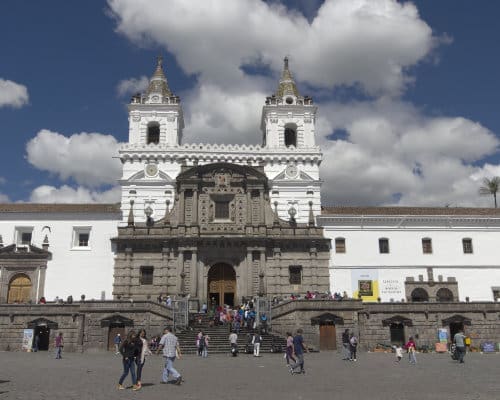
San Francisco Church | ©Angela Drake
Day 9 – Farewell to Ecuador
Immerse in the colonial history of Quito.
Cradled in the foothills of the Pichincha volcano, Quito hosts the largest and best-preserved colonial center in the Americas. It is also the world’s very first UNESCO World Heritage city.
With its impressive historical sites, ancient baroque art, and impressive museums, Quito is best enjoyed on foot with a morning walking tour.
Depending on your flight schedule, we will do our best to enjoy as many of these options as you like.
We can visit different historical treasures, entering numerous striking monasteries like San Francisco, La Compañia de Jesús (aka “the gold church”) and other cathedrals. We also recommend seeing the emblematic Plaza de la Independencia from where Francisco Orellana’s expedition set forth to navigate the entire length of the Amazon river in 1542.
Other excellent options include a visit the exquisite array of pre-Columbian ceramics at the Casa Alabado or enjoy the rich collection of native orchids and other species of plants at Quito’s Botanical Garden.
We will enjoy a relaxing lunch at a local restaurant and make sure you have time to purchase any last minute gifts or mementos. According to your schedule, we will make sure you arrive at Quito’s International Airport in plenty of time to board your flight.
Thank you for visiting biodiverse Ecuador with us!
This Itinerary Includes
- Transfers in and out, from and to airport and lodges.
- Private land transportation according to itinerary.
- Meals and snacks.
- Beverages including purified water, soft drinks, fruit juices, coffee & tea.
- Accommodation based on double occupancy
- Tour Leader - Bilingual Naturalist Guide equipped with quality spotting scope and years of experience.
- Local Indigenous guides at most lodges.
- All excursions described in program.
- Admission fees to parks and reserves described in program.
Not Included
- International airfares.
- Personal expenses like laundry or alcoholic drinks.
- Tips for guides, drivers, and staff.
- Travel or Medical insurance.
- Any other item not specified in what is included.
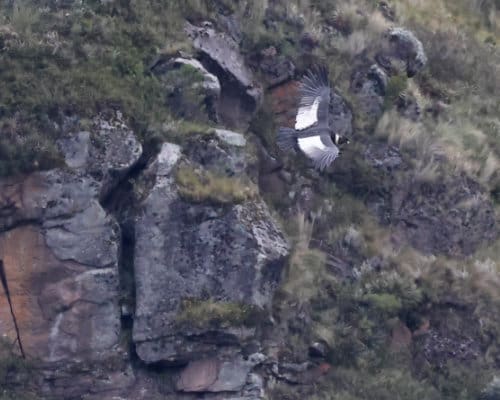
Andean Condor, Antisana National Park | ©Norby Granda Lopez

Glacier Valley of Laguna Seca | ©Norby Lopez Granda
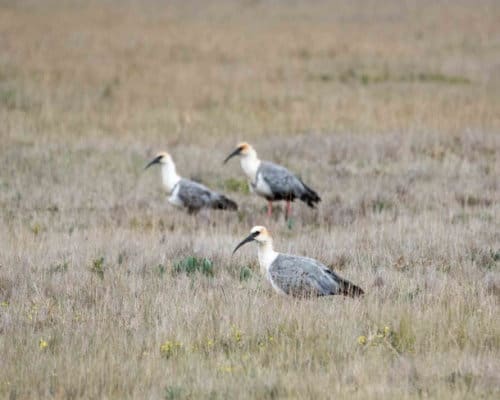
Black-faced Ibis | ©Angela Drake

Masked Mountain-tanager | ©Angela Drake
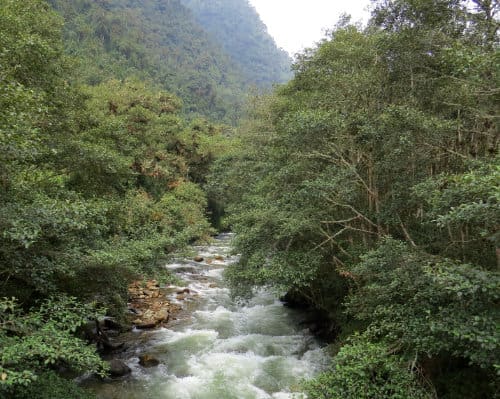
The Papallacta River | ©Norby Lopez Granda
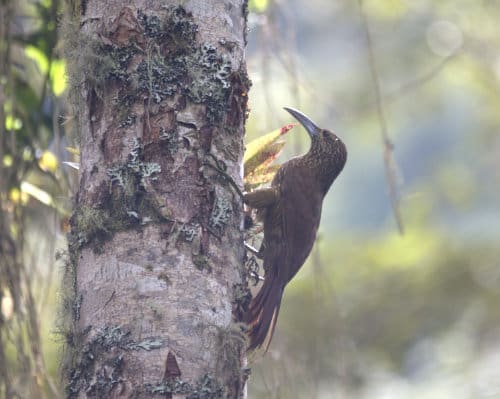
Strong-billed Woodcreeper | ©Angela Drake
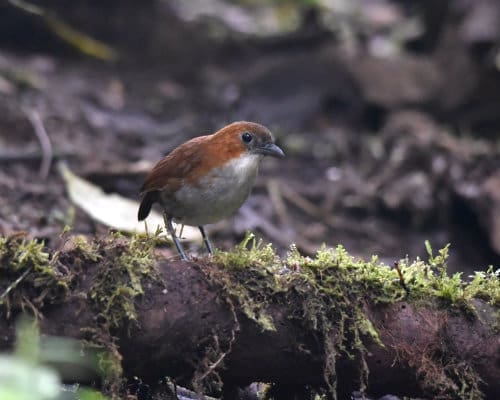
White-bellied Antpitta | ©Angela Drake

Andean Tapir | ©Norby Lopez Granda

San Isidro Cloud Forest | ©Norby Lopez Granda
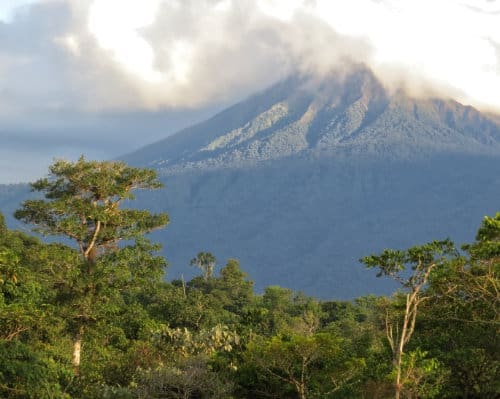
Sumaco Volcano | ©Norby Lopez Granda

Tamarin Monkey | ©Norby Lopez Granda
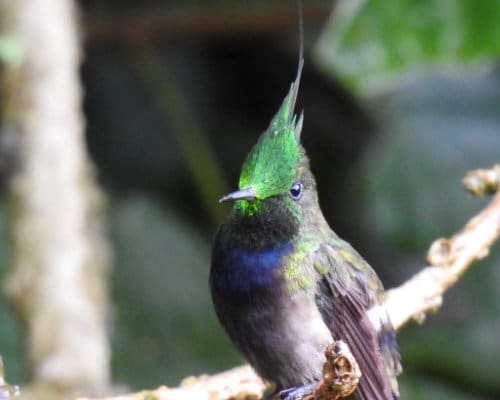
Wire-crested Thorntail | ©Norby Lopez Granda
Important Information for All of Our Tours
Cancelation Policy
Cancellation refunds and penalties are based on the following schedule:
- If cancellation is made 120 days or more before the tour departure date, a cancellation fee of $500 per person will be charged.
- If the client chooses to reserve another Biotropica Expeditions tour that will operate within the upcoming 12 months, the cancellation fee will be $100 per person.
- If cancellation is made fewer than 120 days before departure date, no refund is available.
This policy and fee schedule also apply to all trips or extensions.
We strongly recommend the purchase of trip cancellation insurance for your protection.
Visas and Passports
VISAS:
Visas are not required for U.S., Canadian or European citizens for entry into Ecuador for a stay of up to consecutive 90 days - three months.
PASSPORTS:
You will need a current passport with a minimum of 6 months remaining from its expiration date. We will ask you for this expiration date when you make your reservation.
Your passport will also need a minimum of two blank pages to allow for stamps in and out of Ecuador. If you begin your travel in any other country, be sure to allot more pages for the extra legs of your trip.
Furthermore, ff you need a new or renewed passport, please do so with anticipation. Currently, in the United States, even an expedited passport can take weeks to receive.
We recommend arriving to Ecuador with a color photocopy of the first two pages of your passport. Keep the photocopies in a safe place, so if your passport is lost you will have proof of identification.
The best source for current information about requirements for entering US Citizens entering Ecuador can be found on the US State Department website.
Health and Safety
ECUADOR
The US Centers for Disease Control provides general suggestions for health and vaccinations in regards to your trip to Ecuador. We highly recommend following their suggestions.
The US State Department maintains an updated travel advisory for Ecuador.
We highly recommend our US American clients signing up for the STEP program in order to receive updates from the US Embassy in Quito, Ecuador while traveling.
Additional Expenses
Your trip with Biotropica Expeditions includes most expenses. However, you will want to bring enough cash to cover personal expenses not included in the program. These might include taxi rides, laundry, special gratuities, meals on your own, and gifts to bring home.
It is difficult – if not impossible – to predict fuel costs at the time departure. Our prices are based upon the prevailing fuel rates upon itinerary publication. However, if the fuel rates increase significantly, it may be necessary to institute a fuel surcharge. We will provide as much guidance and warning as possible.
Money in Ecuador
The official currency of Ecuador is the US dollar.
Cash is most commonly used in rural areas and in some family run businesses in cities. We recommend bringing bills in small denominations as anything larger than a $20 can be difficult to spend.
ATM's are available in major cities. However, in smaller towns and rural areas, it can be difficult to find an ATM that works with all international bank cards. When in doubt, carry cash for extra purchases.
Most credit cards, especially MasterCard and VISA, are accepted in many establishments and businesses, especially in large cities like Quito, Cuenca, and Guayaquil.
Pre- and Post- Tours Options
Also, please consider some pre-tour or post-tour options.
Some participants may want to have the option of exploring Quito, the largest and best-preserved colonial center in Latin America, the world's very first UNESCO World Heritage city. With its impressive historical sites, ancient baroque art, museums and cradled in the foothills of Pichincha volcano, participants may choose to arrive earlier and experience a day or two here before beginning the program.
There are many activities in Quito around the colonial center, connecting with museums like the Alabado, which showcases an exquisite array of pre-Columbian ceramics, artifacts in beautiful displays; walking and exploring into numerous striking monasteries and cathedrals; the emblematic Plaza de la Independencia (independence plaza – the main square) from where the expedition that discovered the Amazon river marched to the Atlantic in 1542.
Above Quito is the Pichincha volcano, the gate to the Choco Cloud Forest, the recently added Biosphere Reserve in the Tropical Andes, with extraordinary hiking and birding opportunities, all within the city limits. The views of the imposing Eastern range of the Andes are spectacular.
Other options include the Botanical Garden of Quito with a rich collection and exhibit of native orchids and other species of plants, the Andes mountains in Antisana or Cotopaxi National Parks, exploring the foothills of these superb volcanoes and Paramo ecosystem.
Would you like to personalize From Andean Peaks to Amazon Rainforests?
Would you like to personalize this tour? Maybe you want to add a day, visit a different site, make sure you see a certain bird? If so, please fill out this form.
If this is an urgent request, contact Norby and Susy directly via WhatsApp at +593 99 901 1505.
